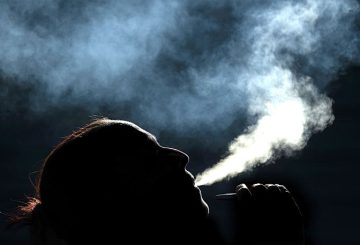Chính phủ đã quyết định mở rộng một cách mới để đáp ứng 111 cuộc gọi từ những người có mối quan tâm về sức khỏe tâm thần.
Mô hình đồng phản hồi hiện sẽ có sẵn trên toàn quốc. Trước đây, nó chỉ được sử dụng ở một số khu vực. Khi ai đó gọi 111 vì đau khổ về tinh thần hoặc có ý định tự tử, cảnh sát, nhân viên cứu thương và các chuyên gia sức khỏe tâm thần đều đến giúp đỡ.
Các sở cảnh sát và y tế sẽ đưa ra một kế hoạch chi tiết cho Nội các vào tháng 3 tới. Họ sẽ giải thích cách phản ứng chung này sẽ hoạt động và những gì họ cần để làm điều đó.
Bộ trưởng Y tế Ayesha Verrall cho biết sự thay đổi này sẽ diễn ra trong 5 năm tới. Mục tiêu là có phản ứng này ở mọi quận Cảnh sát. Bằng cách này, những người cần trợ giúp về sức khỏe tâm thần có thể nhận được sự hỗ trợ phù hợp một cách nhanh chóng.
Mô hình này lần đầu tiên được thử nghiệm tại Wellington vào năm 2020 và 2021. Trung sĩ cấp cao Matt Morris nói rằng các đội chia sẻ thông tin về người gọi và quyết định cách tốt nhất để giúp đỡ. Thông thường, họ biết người đang gọi. Điều này có nghĩa là họ có thể không phải lúc nào cũng cần gửi xe cứu thương hoặc xe cảnh sát.
Một nghiên cứu của Đại học Otago cho thấy kết quả tốt. Khi nhóm đồng phản ứng đang làm việc, ít người đến phòng cấp cứu của bệnh viện hơn. Ngoài ra, những người được nhóm giúp đỡ đã có trải nghiệm tốt hơn trước.
Báo cáo gợi ý mạnh mẽ việc sử dụng mô hình đồng phản hồi nhiều hơn.
Năm 2017, National đã trao 8 triệu đô la cho cảnh sát để thử nghiệm mô hình này ở Auckland, Christchurch và Palmerston North. Khi đảng Lao động lên nắm quyền, họ đã thay đổi kế hoạch.
Chi phí chính xác của sự thay đổi này vẫn chưa được biết. Hiện tại, các khu vực sử dụng mô hình này phải trả từ ngân sách của chính họ. Nhưng có một nơi, Whanganui, đã nhận được 3,5 triệu đô la từ Quỹ Tiền thu về tội phạm.
Người đứng đầu Quỹ Sức khỏe Tâm thần, Shaun Robinson, tin rằng đây là một bước đi thông minh. Thử nghiệm cho thấy nhiều người được giúp đỡ tốt hơn mà không cần đến bệnh viện hoặc cảnh sát. Điều này giúp tiết kiệm thời gian và tài nguyên.
Hiệp hội Cảnh sát thường nói rằng cảnh sát đang làm quá nhiều việc trong lĩnh vực sức khỏe tâm thần. Chris Cahill từ hiệp hội nói rằng các cơ quan khác có thể làm công việc này tốt hơn.
Ngày càng có nhiều người gọi cảnh sát vì đau khổ về tinh thần. Từ tháng 6 năm 2021 đến tháng 6 năm 2022, cảnh sát đã nhận được 73.006 cuộc gọi như vậy. Con số này cao hơn 55% so với năm năm qua. Cảnh sát đã thực hiện 30% các cuộc gọi đau khổ về tinh thần và 70% các cuộc gọi tự sát hoặc cố gắng tự sát
.




















































-360x245.jpg)









